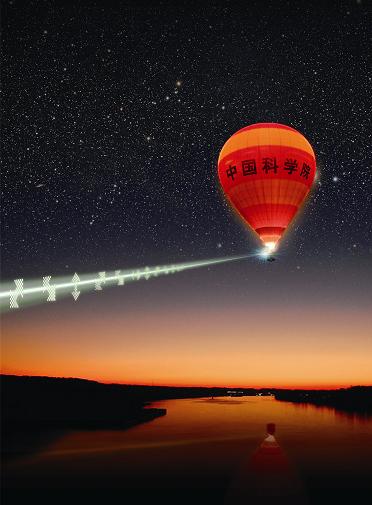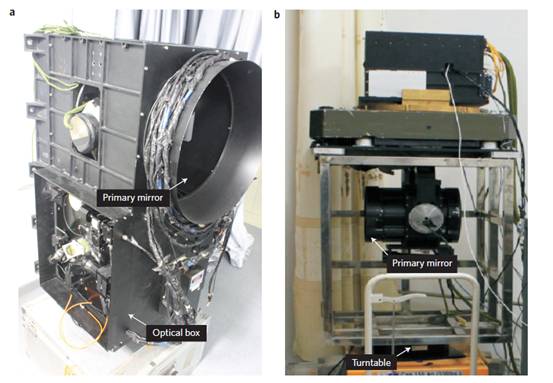The collaborative innovation team, composed of physicists from National Laboratory for Physical Sciences at the Microscale of our university, including Prof. PAN Jianwei and PENG Chenzhi, together with members from the Chinese Academy of Sciences including Shanghai Institute of Technical Physics, the Institute of Optics And Electronics etc., have achieved comprehensive and direct verifications for quantum communication between satellites and ground stations. The results pave the way towards ground–satellite QKD and a global quantum communication network.
The whole research was published on Nature Photonics, a high-profile academic journal in the form of a long article in May 1 issue of Nature Photonics journal (Nature Photonics 7, 387-393 (2013). The result represents another important breakthrough after experiments of quantum teleportation and entanglement distribution over 100-kilometre free-space channels. It is also the latest important result from Quantum information and quantum science and technology frontier collaborative innovation center.
The whole research was published on Nature Photonics, a high-profile academic journal in the form of a long article in May 1 issue of Nature Photonics journal (Nature Photonics 7, 387-393 (2013). The result represents another important breakthrough after experiments of quantum teleportation and entanglement distribution over 100-kilometre free-space channels. It is also the latest important result from Quantum information and quantum science and technology frontier collaborative innovation center.

Fig 1: a hot-air balloon used in experiments/ Courtesy of HFNL
QKD is thought to be the most promising practical application of quantum information technology. Owing to the unconditional security ensured by fundamental physical principle, scientists have been devoted to the research on global quantum key distribution. However, to implement global quantum communication network, people need to overcome the limitation of distance.
At present, due to huge loss and the imperfections of detectors, fiber-based implementations have almost reached their maximum communication distances. Owing to restrictions such as earth curvature and visible distance condition, free-space QKD on stationary sites is challenging in achieving larger distances. Fortunately ground–satellite quantum key distribution could provide the most potential and feasible way to achieve much larger distances and even communication among any two points around the world.
Theoretical analysis indicates that, for low Earth orbit satellites, transmission loss of the atmosphere, quantum efficiency of channel, background noise are all important problems that need to be overcome. How to build steady optical links with rapidly moving, attitude-changing, vibrating terminals, as well as in a high-loss environment while maintaining maximum channel efficiency, reducing quantum bit error rate, are the key issues for the realization of QKD based on low Earth orbit satellites.
After years of cooperation between Shanghai Institute for Advanced Studies of USTC, the Shanghai Institute of Technical Physics of CAS, the collaborative innovation team of CAS have developed the QKD receiver and transmitter terminals, and accumulated a series of key technologies.
In the experiments, the collaborative innovation team uses a moving platform to simulate angular velocity and acceleration of low Earth orbit satellites, using hot-air balloon to simulate random vibration and satellite attitude, using hundreds of kilometers of ground free-space channel to simulate the high-loss channel between ground and satellites. As a result, the feasibility of secure ground-satellite quantum communication was successfully demonstrated.

Fig 2: Photographs of the QKD receiver and transmitter terminals/ Courtesy of Nature Photonics
Due to potential and significant roles of basic research over practical application of QKD, other research achievements on QKD of an aircraft and ground from group of University of Munich, as well as experimental demonstration of long-distance continuous-variable quantum key distribution from the French National Center for Scientific Research were also published in the same issue of Nature Photonics.
The whole research lays necessary technical foundations for achievement of global-scale quantum communication network based on ground-satellite quantum communication by launching quantum science experimental satellite of our country, which also provides a test bed for tests of quantum foundations. Moreover, it also helps to explore how to combine quantum theory with Einstein's general theory of relativity. It could be said that the results represent a milestone on the road to satellite-based quantum communication.
(YU Deguang, USTC News Center)
